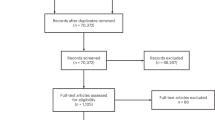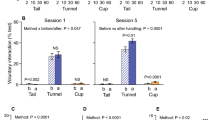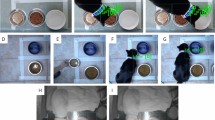Abstract
Subjecting laboratory animals to handling-induced stress can lead to variable experimental errors. Additionally, handling wild species may endanger laboratory staff and the animals themselves. To protect both laboratory staff and laboratory animals, the author created a useful device for transporting wild rats (Rattus norvegicus). Though the author designed this device for moving wild rats, he suggests that it could be used with all mammals of comparable size. Here, the author describes this device, which he has found to be particularly helpful when physical contact between animals and humans is a problem.
This is a preview of subscription content, access via your institution
Access options
Subscribe to this journal
We are sorry, but there is no personal subscription option available for your country.
Buy this article
- Purchase on Springer Link
- Instant access to full article PDF
Prices may be subject to local taxes which are calculated during checkout





Similar content being viewed by others
References
Rosenthal, R. On the social psychology of the psychological experiment: the experimenter's hypothesis as unintended determinant of experimental results. Am. Sci. 51, 268–283 (1963).
Grandin, T. Assessment of stress during handling and transport. J. Anim. Sci. 75, 249–257 (1997).
Stryjek, R. & Pisula, W. Warsaw Wild Captive Pisula Stryjek rat—Establishing a breeding colony of Norway rat in captivity. Pol. Psychol. Bull. 39, 67–70 (2008).
Stryjek, R. Devices for handling small mammals in laboratory conditions. Acta Neurobiol. Exp. 68, 407–413 (2008).
Barnett, S.A. A Study in Behaviour (Methuen, London, 1963).
Griebel, G., Belzung, C., Misslin, R. & Vogel, E. The free-exploratory paradigm: an effective method for measuring neophobic behaviour in mice and testing potential neophobia-reducing drugs. Behav. Pharmacol. 4, 637–644 (1993).
Author information
Authors and Affiliations
Corresponding author
Ethics declarations
Competing interests
The author declares no competing financial interests.
Rights and permissions
About this article
Cite this article
Stryjek, R. A transportation device for rats. Lab Anim 39, 279–281 (2010). https://doi.org/10.1038/laban0910-279
Received:
Accepted:
Issue Date:
DOI: https://doi.org/10.1038/laban0910-279



